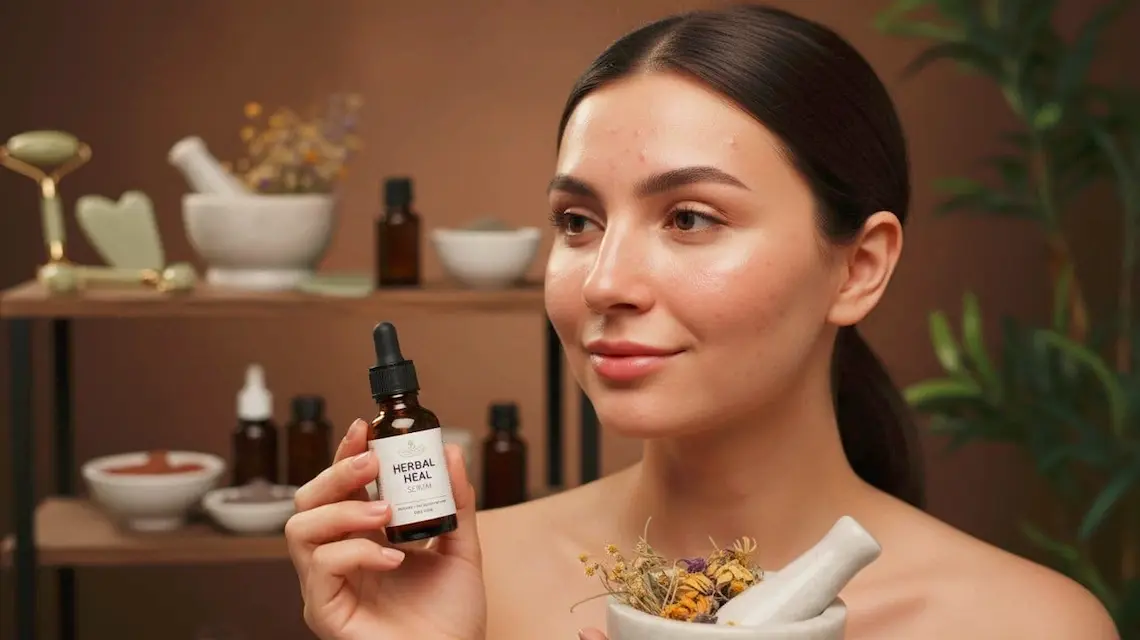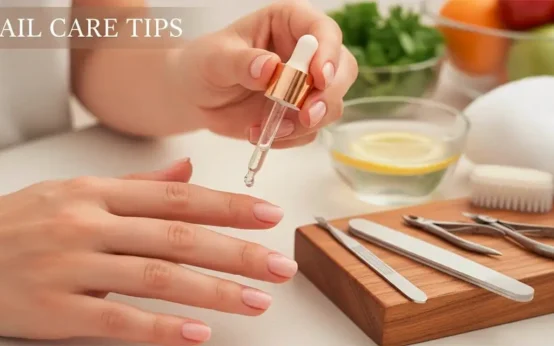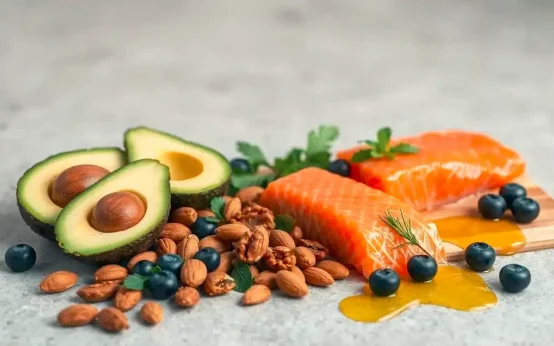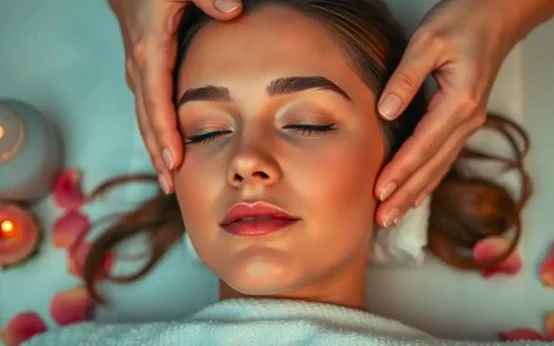Hormonal acne can feel like a bad joke, the kind that shows up before a period or along the jawline right when you have plans. If you are looking for holistic approaches to hormonal acne, you want more than a spot treatment. You want a whole-body plan that works with your skin, not against it.
Here is the idea in simple words. Hormonal acne is driven by shifts in hormones, stress, and blood sugar. A holistic approach looks at food, daily habits, stress, and skin care together. Results take time, often 8 to 12 weeks, and small steady changes add up. You will get a simple plan with step-by-step tips. If your acne is severe or very painful, plan to see a doctor too.
What is hormonal acne and why a holistic approach helps
Hormonal acne often shows up as deep, sore pimples on the chin, jaw, and neck. It can flare right before a period, during times of high stress, or when sleep is off. Some people also notice clogged pores on the forehead and blackheads that keep coming back. Body acne on the chest and back can tag along.
The roots live below the surface. Androgens, the hormones that increase oil production, can rise with cycle shifts, stress, or insulin swings. When androgens go up, oil glands pump harder and pores get stickier. Insulin spikes from high sugar meals can also raise androgens and growth signals, which drives more oil and clogged pores. Inflammation in the gut and skin can turn small bumps red, tender, and slow to heal. Stress and poor sleep raise cortisol, which makes breakouts worse and slows repair.
Why does a whole-body plan help? Because these drivers talk to each other. Food choices affect insulin and inflammation. Movement and sleep help hormones stay steady. Gentle, steady skin care supports the skin barrier so actives can work without a burn-and-peel cycle. When you work on the system, not just the spots, breakouts tend to ease and heal faster.
Give changes 8 to 12 weeks. Track your cycle, foods, sleep, stress, and products so you can spot patterns. Look for fewer deep cysts, faster healing, and lighter marks over time. If you have severe pain, scarring, or signs of a hormone condition, get medical help sooner. You can still use a holistic plan alongside treatment.
Spot the signs: how to tell if breakouts are hormonal
- Flares 5 to 10 days before a period, then ease after it starts
- Deep, tender cysts on the chin, jaw, and neck
- Back or chest acne that worsens with stress or cycle shifts
- Stubborn clogged pores and blackheads that refill
- Dark marks that linger longer than a month
Root causes to address: insulin, androgens, inflammation, stress
- Insulin: Big sugar spikes can raise insulin, which boosts oil and clogs pores.
- Androgens: Higher androgens drive deeper, more painful pimples.
- Inflammation: Gut and skin inflammation turns small bumps red and slow to heal.
- Stress: Stress and poor sleep raise cortisol, which worsens oil and delays repair.
Track your cycle and skin to find patterns
Use a notes app or a free tracker. Mark period days, new pimples, pain level, foods, sleep hours, stress, exercise, and new products. Add any travel, illness, or big life events. Take a weekly face photo in the same light. Patterns often show up after 1 to 2 cycles, so stick with it.
When to see a doctor or dermatologist
- Severe cysts, scarring, strong pain, or mood changes
- Acne that does not improve after 3 months of steady care
- Signs of PCOS, very irregular periods, coarse hair growth on the chin, hair thinning, or sudden weight changes
- Treatments that burn or worsen skin for weeks
Common meds that can pair with a holistic plan include spironolactone, some birth control pills, topical retinoids, azelaic acid, and short courses of antibiotics when needed. Pregnancy needs special care, avoid retinoids and check every product with your doctor.
Eat for clear skin: nutrition that supports hormone balance
Food choices can steady blood sugar, calm inflammation, and support healthy hormones. Think simple, flexible, and repeatable. A plate method works for meals at home and on the go.
Start with fiber-rich carbs, lean protein, healthy fats, and colorful plants. Fiber slows sugar absorption and feeds good gut bacteria. Protein and fats keep you full, which reduces cravings. Omega-3s from fish, walnuts, and flax help calm inflammation. Minerals like zinc and magnesium support skin healing and mood.
High sugar foods can spike insulin, then oil. Some people find that whey-heavy or skim dairy worsens acne, while yogurt with live cultures or lactose-free options sit better. This is personal, so test changes and track.
Realistic swaps help. Try sparkling water with lime instead of soda, oats or eggs instead of sweet cereal, and whole fruit instead of juice. Choose whole grains like quinoa or brown rice over white bread or chips. Add veggies to most meals, frozen is fine.
Hydration supports skin and energy. Aim for water, herbal tea, or unsweetened iced tea. Include probiotic foods like yogurt with live cultures, kefir, kimchi, or sauerkraut if you tolerate them. A sample day could look like this: veggie omelet with avocado for breakfast, salmon bowl with brown rice and greens for lunch, a handful of nuts and berries for a snack, and turkey chili with beans and a side salad for dinner.
Build a clear-skin plate with fiber, protein, and healthy fats
Picture your plate. Fill half with non-starchy veggies like leafy greens, broccoli, peppers, or zucchini. Add one quarter protein, salmon, chicken, eggs, tofu, or beans. Add one quarter high-fiber carbs, quinoa, brown rice, lentils, or sweet potato. Include a thumb of healthy fat, olive oil, avocado, nuts, or seeds. This mix steadies blood sugar and trims cravings.
Foods to reduce: sugar, refined carbs, and some dairy
High glycemic foods trigger quick blood sugar spikes, then oil and clogged pores. Swap soda, candy, white bread, and ultra-processed snacks for whole foods you enjoy. If dairy seems to flare your skin, try a 4 to 6 week trial reduction. Some find whey-heavy or skim milk worse than yogurt or hard cheese. Test lactose-free milk, yogurt with live cultures, or fortified non-dairy milk, and track your skin.
Smart add-ins from your kitchen: zinc, omega-3s, green tea, spearmint
Food first works best. Zinc comes from red meat, poultry, beans, pumpkin seeds, and oysters. Omega-3s come from salmon, sardines, mackerel, walnuts, chia, and flax. Green tea offers EGCG, a calming antioxidant. Spearmint tea may help some people with androgen-driven acne. Try 2 to 3 cups of green tea or 1 to 2 cups of spearmint tea daily. Skip high-dose zinc without guidance, and keep caffeine earlier in the day.
Supplements with science and safety tips
Not medical advice, just common ranges to discuss with your clinician.
- Zinc, 15 to 30 mg daily with food, short term if diet is low.
- Fish oil, enough to give 1 to 2 g combined EPA plus DHA daily.
- Vitamin D, dose based on lab levels and your doctor’s advice.
- Probiotic, look for Lactobacillus or Bifidobacterium blends.
For PCOS, myo-inositol at 2 to 4 g daily can help with cycles and insulin, talk to your doctor. Berberine can affect blood sugar and interact with meds. Avoid high-dose biotin, it can skew lab tests. Retinoid supplements are not safe in pregnancy.
Daily habits that calm hormones and help acne
Sleep, movement, and stress set the tone for your hormones and your skin. Keep the steps easy and low-cost so you can stay consistent.
Build a simple bedtime routine. Walk for a few minutes after meals. Add two short strength sessions each week. Use quick stress tools you can reach for in real time. Keep caffeine to the morning or early afternoon, and keep alcohol light. Clean your phone, keep hands off your face, and rinse sweat soon after workouts.
Consistency matters more than perfection. Aim for progress, not a complete life overhaul. If a habit feels too hard, shrink it until you can do it daily.
Sleep better to lower cortisol and oil
- Go to bed and wake up at the same time daily, even on weekends.
- Dim lights and screens 60 minutes before bed, cue your brain that it is time to wind down.
- Keep your room cool, dark, and quiet.
Add a warm shower, a light stretch, or 10 minutes of reading. Aim for 7 to 9 hours most nights.
Move your body most days: walks and strength
Aim for 150 minutes a week of moderate movement. Short walks after meals, even 10 minutes, can blunt glucose spikes and help insulin. Add two strength sessions that hit large muscles, legs, back, chest. You can use bands or bodyweight at home. Movement lifts mood and supports hormone balance.
Easy stress tools you will actually use
Try three fast, repeatable tools.
- 4-7-8 breathing for 2 minutes.
- A 10 minute guided meditation.
- A 5 minute journal or gratitude list.
Pair one tool with a daily cue, like after brushing your teeth, so it sticks.
Cycle syncing basics for energy, food, and skin
- Menstrual phase, focus on rest, gentle walks, warm meals, and more minerals.
- Follicular phase, try new workouts, lean into higher fiber carbs and colorful plants.
- Ovulatory phase, hydrate well and choose light, balanced meals.
- Luteal phase, add magnesium-rich foods like pumpkin seeds and dark greens, pair treats with protein, and start spot care early if you tend to flare.
Skin care for hormonal acne: gentle, steady, and effective
Your skin barrier is your friend. Keep it strong so actives can work without constant irritation. A simple routine morning and night gives the best results. Pick non-comedogenic products and patch test new items.
Morning, you want protection. Night, you want repair. Add actives slowly, two to three nights per week, and moisturize well. For pregnancy or trying to conceive, azelaic acid is often considered safe, while retinoids are not. Daily sunscreen matters, even on cloudy days, because it prevents dark marks from getting darker.
Simple AM and PM routine for clear, calm skin
- AM, rinse or use a gentle cleanser if needed, then a hydrating toner or mist, a treatment if your skin tolerates it, a light non-comedogenic moisturizer, and a mineral SPF 30 or higher.
- PM, gentle cleanse, apply a leave-on active if used that night, then moisturizer to seal it in.
Keep it short and consistent, your skin will thank you.
Gentle actives that work: salicylic, benzoyl peroxide, adapalene, azelaic acid
Each has a role. Salicylic acid at 0.5 to 2 percent clears pores, try a few times weekly. Benzoyl peroxide at 2.5 percent kills acne bacteria, use as a wash or a thin spot layer. Adapalene, a retinoid, speeds turnover and prevents clogs, use at night two to three times per week to start. Azelaic acid at 10 to 15 percent calms redness and fades marks. To avoid irritation, start slow, moisturize before and after actives, and avoid stacking strong actives on the same night.
Natural options with evidence: niacinamide, green tea, tea tree
Niacinamide at 2 to 5 percent daily can reduce oil and refine pores with little sting. Green tea or EGCG serums help tame redness and soothe. Tea tree at 5 percent gel can work as a spot treatment for some. Patch test on your jawline first, and skip fragrant essential oils that can irritate.
Small habits that prevent new breakouts
Quick wins add up. Change pillowcases 2 to 3 times a week. Clean your phone screen daily. Wash makeup brushes weekly. Choose non-comedogenic sunscreen and makeup. Tie hair back at night. Shower soon after sweating. Do not pick, use a hydrocolloid patch instead.
Conclusion
Small steps can calm chaos. In Week 1 to 2, set your routine, track your cycle and skin, and adjust food basics. Week 3 to 6, add one active and one habit at a time, like walks after meals. In Week 7 to 8, review progress, tweak products, and keep what works. Holistic approaches to hormonal acne work best when you keep them simple and steady. If your acne is severe or you notice PCOS signs, seek care. Ready to start? Pick one change today, write it down, and take your next small win tomorrow.
Related post:
Hormonal Acne, A Holistic FAQ That Gets To The Point
What makes acne “hormonal,” and how can I tell?
Hormonal acne often shows along the jawline, chin, and neck. Breakouts tend to flare 5 to 10 days before a period, or stay persistent with PCOS. You may see deeper, tender bumps, not just whiteheads. Tracking your cycle and breakout pattern helps confirm the link.
Can diet really affect hormonal acne?
Yes. High glycemic foods spike insulin, which can drive oil production and inflammation. Skim milk and whey protein are linked to acne in some people, while yogurt and cheese seem less triggering. Focus on protein, fiber, and healthy fats to keep blood sugar steady.
What should I eat, day to day?
Build meals around protein, colorful produce, whole grains, and healthy fats. Add omega-3 sources, like salmon, sardines, walnuts, chia, or flax. Aim for 25 to 35 grams of fiber daily. Drink enough water, then match caffeine to what your skin tolerates.
Which foods should I try cutting back first?
Start with ultra-processed snacks, sugary drinks, and refined carbs. Test a 4 to 6 week trial without skim milk and whey protein. If you notice changes, reintroduce one item at a time. Keep a simple log to spot triggers.
How do stress and sleep affect breakouts?
Stress raises cortisol, which can nudge oil glands and inflammation. Poor sleep also pushes hormones out of sync. Aim for 7 to 9 hours, a steady sleep schedule, and a wind-down routine. Short daily stress tools, like breath work or walks, add up.
What kind of exercise helps the most?
Both cardio and strength training support insulin sensitivity and hormone balance. Aim for 150 minutes of moderate activity weekly, plus 2 to 3 strength sessions. Avoid harsh, sweaty makeup that blocks pores; cleanse soon after workouts.
Do supplements help, and which are worth considering?
Some can support a plan, not replace it. Options with evidence: omega-3s, 1 to 3 grams EPA+DHA daily; zinc, 15 to 30 mg elemental, short term; vitamin D, to reach sufficiency if low. For PCOS, inositol, 2 to 4 grams daily, may help cycles and breakouts. Spearmint tea, 1 to 2 cups daily, may reduce androgens in some. Avoid high dose iodine. Check meds and pregnancy safety with your clinician.
What about DIM, saw palmetto, or adaptogens?
Evidence is mixed or limited for acne. These can affect hormones and medications. If you try them, do it with medical guidance and monitor for side effects. Stick with proven basics first.
How should I adjust my skincare routine?
Keep it simple.
AM: gentle cleanser, 2 to 10 percent azelaic acid or 2 percent salicylic acid, non-comedogenic moisturizer, broad-spectrum SPF 30+.
PM: gentle cleanser, retinoid like adapalene 0.1 percent or tretinoin if prescribed, light moisturizer. Introduce one active at a time, 2 to 3 nights per week, then build up.
Is “non-comedogenic” a reliable label?
It helps, but it is not a strict standard. Patch test new products, and avoid heavy oils that often clog pores, like coconut or cocoa butter on the face. Look for lightweight gels or lotions.
How long until holistic changes show results?
Skin cycles take time. Expect 8 to 12 weeks for diet, stress, and sleep changes to show on your face. Topicals often take 6 to 8 weeks. Track weekly photos so you see steady gains you might miss in the mirror.
How can I tell a normal purge from a bad reaction?
A purge brings small clogs to the surface where you already break out, starting 1 to 3 weeks after a retinoid or BHA, and settles within 4 to 6 weeks. A reaction brings new redness, burning, or bumps in new areas, and gets worse with use. If in doubt, pause, moisturize, and restart slower.
Does birth control affect hormonal acne?
Combined pills with estrogen can improve acne. Some progestin-only methods can worsen it. Hormonal IUDs help some and flare others; copper IUDs do not affect hormones. Discuss options if acne flares after a method change.
What labs should I ask about if acne feels hormone driven?
Consider total and free testosterone, DHEA-S, SHBG, LH, FSH, prolactin, TSH, and free T4. For metabolic health, ask about A1c, fasting glucose, fasting insulin, and a lipid panel. Vitamin D can be useful, especially if low. Your clinician will tailor based on symptoms and cycle history.
How does gut health play a role?
A diverse gut can calm inflammation. Eat fiber-rich plants, 2 servings of fermented foods daily if tolerated, and rotate produce. Probiotics show mixed results; food sources can be a low-risk start.
Can picking or facials help or hurt?
Picking drives inflammation and scarring. Skip harsh scrubs and extractions at home. For facials, choose gentle, acne-safe options and licensed pros. Stop treatments that sting or leave you red for days.
How do PCOS and acne connect, and what helps?
PCOS often raises androgens and insulin, which can fuel acne. Nutrition that lowers glycemic load, regular exercise, stress care, and better sleep help. Inositol and omega-3s may support cycles. Work with a clinician on diagnosis and a plan.
Any quick day-to-day tips that make a real difference?
Wash pillowcases and towels often. Clean phone screens, avoid touching your face, and remove makeup before bed. Use a simple routine you can stick with, not a dozen products. Wear sunscreen daily; UV can worsen dark marks.
When should I see a dermatologist or primary care clinician?
If you have deep, painful cysts, new scarring, acne with hair loss or irregular periods, or no progress after 12 weeks of steady care, book a visit. Oral options like spironolactone, certain contraceptives, or short antibiotic courses may be needed. An integrative plan can pair medical care with lifestyle steps.




 How To Remove Sun Tan From Hands
How To Remove Sun Tan From Hands  How to Take Care Your Nails
How to Take Care Your Nails  How to Improve Good Cholesterol (HDL)
How to Improve Good Cholesterol (HDL)  Hormone Health Tips for Women
Hormone Health Tips for Women  Heal Dry Damaged Hair: A Simple Plan That Works
Heal Dry Damaged Hair: A Simple Plan That Works  How to Look Much Younger Without Drastic Changes
How to Look Much Younger Without Drastic Changes